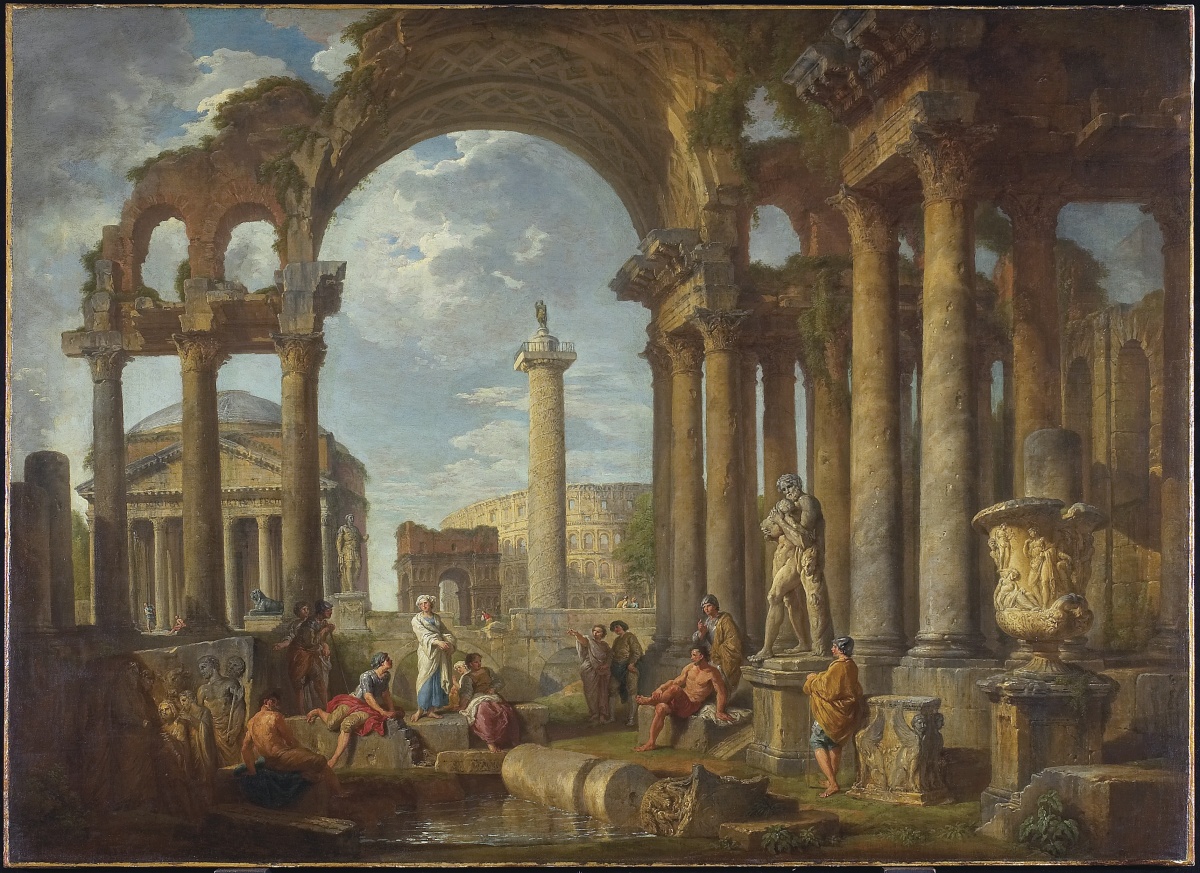Roman architecture used the Greek column, usually Corinthian, and the round arch, originated by the Etruscans; from this developed the barrel vault, a continuous series of arches like the top of the tunnel that could be used to roof large areas. The Romans introduced the dome, and a splendid one surmounts the Pantheon at Rome. Roman structures emphasized bigness: the Colosseum seated forty-five thousand spectators; the Baths of the emperor Caracalla accommodated thousands of bathers. Amphitheaters, temples, villas, and other monumental remains of Roman domination can be found throughout the Middle East, North Africa, and western Europe.
Roman sculpture, though derived from Greek and Hellenistic models, had a realism of its own, especially in imperial portrait busts. A sculptured frieze running spirally up a monumental column vividly records the victories of the emperor Trajan. Of Roman painting we have chiefly the wall decorations of the villas at Pompeii and the mosaic floors of public and private buildings. A recently discovered villa at Piazza Armerina in Sicily has a superb series of third-century floors, including a scene of women in a gymnasium tossing a ball from hand to hand. At Ostia Antica, the port for Rome, numerous mosaics tell us of art, daily life, and social customs.

